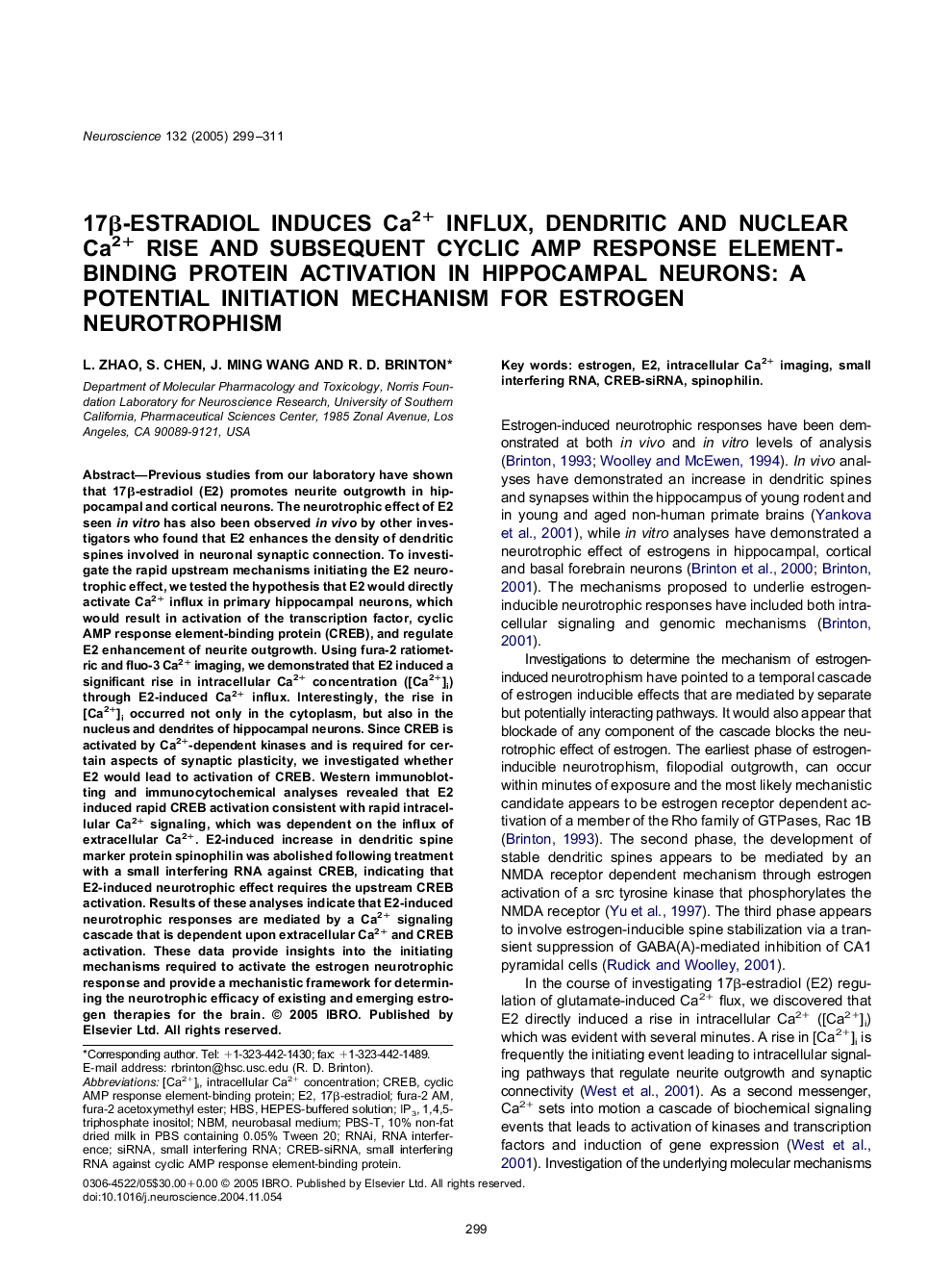| Article ID | Journal | Published Year | Pages | File Type |
|---|---|---|---|---|
| 9425640 | Neuroscience | 2005 | 13 Pages |
Abstract
Previous studies from our laboratory have shown that 17β-estradiol (E2) promotes neurite outgrowth in hippocampal and cortical neurons. The neurotrophic effect of E2 seen in vitro has also been observed in vivo by other investigators who found that E2 enhances the density of dendritic spines involved in neuronal synaptic connection. To investigate the rapid upstream mechanisms initiating the E2 neurotrophic effect, we tested the hypothesis that E2 would directly activate Ca2+ influx in primary hippocampal neurons, which would result in activation of the transcription factor, cyclic AMP response element-binding protein (CREB), and regulate E2 enhancement of neurite outgrowth. Using fura-2 ratiometric and fluo-3 Ca2+ imaging, we demonstrated that E2 induced a significant rise in intracellular Ca2+ concentration ([Ca2+]i) through E2-induced Ca2+ influx. Interestingly, the rise in [Ca2+]i occurred not only in the cytoplasm, but also in the nucleus and dendrites of hippocampal neurons. Since CREB is activated by Ca2+-dependent kinases and is required for certain aspects of synaptic plasticity, we investigated whether E2 would lead to activation of CREB. Western immunoblotting and immunocytochemical analyses revealed that E2 induced rapid CREB activation consistent with rapid intracellular Ca2+ signaling, which was dependent on the influx of extracellular Ca2+. E2-induced increase in dendritic spine marker protein spinophilin was abolished following treatment with a small interfering RNA against CREB, indicating that E2-induced neurotrophic effect requires the upstream CREB activation. Results of these analyses indicate that E2-induced neurotrophic responses are mediated by a Ca2+ signaling cascade that is dependent upon extracellular Ca2+ and CREB activation. These data provide insights into the initiating mechanisms required to activate the estrogen neurotrophic response and provide a mechanistic framework for determining the neurotrophic efficacy of existing and emerging estrogen therapies for the brain.
Keywords
Related Topics
Life Sciences
Neuroscience
Neuroscience (General)
Authors
L. Zhao, S. Chen, J. Ming Wang, R.D. Brinton,
